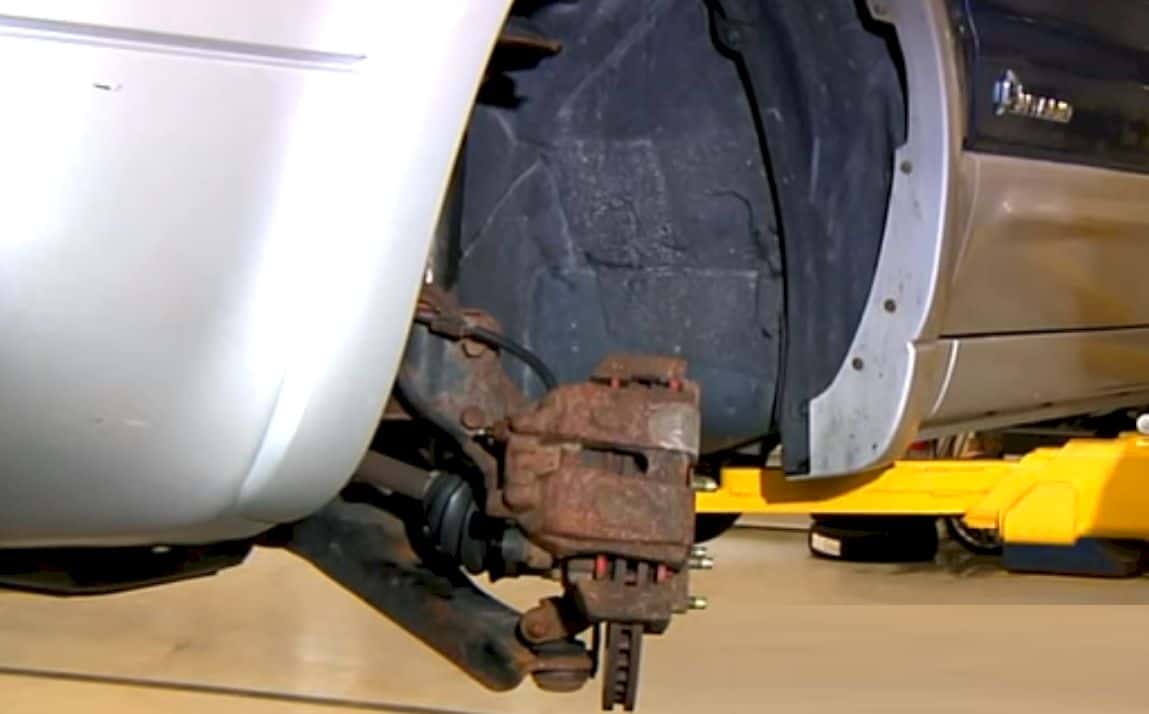Whenever you are replacing components in your braking systems or your brake fluid gets older, there is the tendency of air seeping in. The air in brake lines can make your brakes malfunction, especially for cars equipped with anti-lock systems.
Properly bleeding ABS brakes is essential, especially with this system becoming an essential part of nearly all cars for safety reasons. This article will guide you to the ABS brake bleed process, even without the help of a scan tool.
The Effect of Air in Brakes
For starters, having air in the brakes is something that you don't want to happen. When there's air in the lines, the hydraulic system that applies the brakes won't operate properly, resulting in brakes that don't have enough bite. Even a bit of air inside the lines can make the entire system fail and result in
The most common of air in ABS module symptoms is when the pedal feels spongy when you press it. When there is air in the lines, you make more effort on the pedals to channel out the desired braking force. The more air present in the lines, the more pronounced this spongy effect becomes, and the more effort you exert in bringing your car to a stop. This is one of the most common reasons why you might not be getting the right amount of braking power, even if all your braking components are in top condition.
It may not seem like much during most common driving conditions, but this can be potentially dangerous if not checked properly.
Why Bleeding Is Tricky in ABS Systems?
Flushing that excess air out of your hydraulic brake lines is essential to get your brakes performing as it should. With excess air (or contamination in the fluid lines) come alterations in the pressure gradient, which causes you to put more effort into pressing the brakes. Worse, when such gradient imbalances are not checked, the brake pump and valves can potentially get damaged.
Given the more sensitive nature of anti-lock brakes, bleeding becomes a more crucial part in maintaining them. However, there is a trickier bleeding process involved compared to non-ABS systems
This is where the ABS bleeding scan tool comes into the picture. Different companies utilize different scanning tools for their “proprietary” braking systems, and acquiring these tools are not cheap. Some of these scanners cost hundreds, if not thousands of dollars and can only be used in a limited number of cars. The “need” for these scanners allow for company service centers and certain mechanics to charge a premium in brake maintenance and parts replacement.
Read Next: tail lights not working but brake lights are
How to Bleed ABS Systems?

Not everyone may know this (and not everyone will tell you that this is the case), but you can actually successfully and safely bleed your ABS-equipped car even if you don’t have the prescribed ABS bleeding tool. There may be some specific steps involved in doing this (a quick check in your car manual can do the trick), but here are the general steps on how you can perform a brake bleed right in your garage.
1. Bleed the brakes first
The ABS system is the most challenging part of the entire braking line to bleed out. Interestingly, it is very possible that the air is not present at that level. As such, we highly recommend that you check the brakes itself first for air before you even consider touching the ABS. You can do the procedure by yourself, but the brake bleeding is best done by 2 people.
To flush out air from the brakes, you first have to remove the old (and possibly contaminated) fluid from the brake lines. You can do this by opening the bleeder valves and then use a vacuum tool to suck out the lines dry. Then, as you fill out the new fluid, have your partner press on the brakes. As your partner depresses the brakes, loosen the bleeding valve. You’ve adequately bled the brakes once new fluid starts to come out of the valve.

The most efficient way to bleed the braking system depends on how the braking system is set up. You can look up at your car’s instructional manual on how to replace brake fluid when
2. How to bleed ABS module without scan tool
Once your brake lines are properly bled, you can continue further troubleshooting. If the brakes still don’t feel right after you have properly flushed the brakes, then you might need to bleed the ABS module itself.
Without a scan tool, bleed ABS methods can be performed safely and accurately. To do this, you need to turn on the engine or at least in a position where the battery is about to activate the ABS. Apply pressure by pressing the brakes and then releasing it again. Keep doing this until the dashboard lights come off and/or the brakes get that firm feel when you press it. This most of the time does the trick in flushing out the ABS.
Conclusion
Bleeding ABS brakes can be done at home with the right tools and with the right knowledge of your car’s braking system. However, should you be unable to fix it, it is important to have your brakes checked by a professional. This is to ensure that problems in the braking system are properly addressed.
References:
https://en.wikipedia.org/wiki/Brake
https://community.cartalk.com/t/why-cant-you-easily-bleed-brakes-with-abs/109091/19
James is a certified auto technician specializing in commercial vehicles. With 30 years of experience under his belt, James has encountered almost every type of automotive issue there is! Besides his day job at the repair shop, he is also an amateur race car driver.
